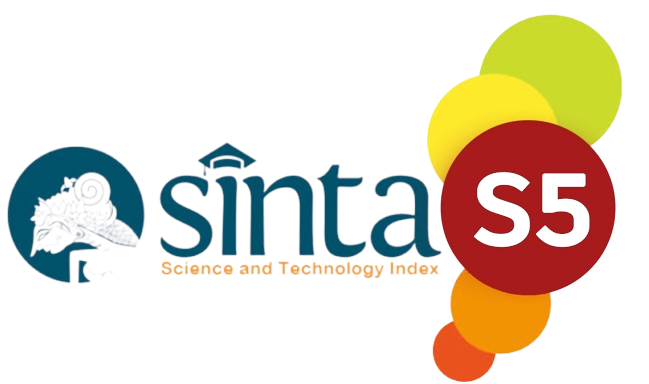Analysis of the Needs for the Development of Computational Chemistry-Based Learning Media on the Subject of Hydrocarbons
Abstract
Abstract
This study aims to analyze the needs before developing computational chemistry-based learning media on hydrocarbon materials. This research is classified as development research developed with the ADDIE model. It's just that the stage used in this study is only limited to the analysis stage. Data collection in research is carried out by literature study methods and field studies with research instruments in the form of questionnaires on learning media needs and interviews by teachers. The location of this study is SMA Negeri Modal Bangsa Arun. Based on the results of interviews with chemistry teachers, it was found that learning hydrocarbon material at the high school level requires more effort because students must understand molecular structure, chemical bonds, and atomic structure. This makes students less understanding of concepts microscopically and can also cause misconceptions. Then, the results of the needs analysis show that there are still limited learning media that support microscopic concepts, especially the shape of molecules in 3-D. Based on the results of this study, it can be concluded that it is necessary to develop computational chemistry-based learning media on hydrocarbon materials.Keywords
Full Text:
PDFReferences
Amalia, Irma., et al., [MOU1] (2019). Pemodelan Reaksi Hidrogenasi Senyawa Hidrokarbon Golongan Alkena dan Alkuna Melalui Studi Komputasi. CHEMICA: Jurnal Pendidikan Kimia dan Ilmu Kimia. 2:1 33-40.
Arifani, Dewi., Lalu Rudyat.,et al., (2021). Pengembangan Modul Praktikum Kimia Berbasis Kimia Komputasi Pada Materi Asam Basa. Prosiding SAINTEK. Mataram: 9-10 November 2020. Hal 660-666.
Hadisaputra, S., Savalas, L. R. T., & Hamdiani, S. (2017). Praktikum Kimia Berbasis Kimia Komputasi Untuk Sekolah Menengah Atas. Jurnal Pijar MIPA, 12(1), 11-14.
Harahap, Annisa Sabbilla., Erlin Karya., & Nugraha Asep Wahyu. (2022). Pengembangan Media Pembelajaran Berbasis Metode Komputasi Pada Materi Larutan Elektrolit dan Non elektrolit. Educenter: Jurnal Ilmiah Pendidikan. 1:6 683-690
Hasby (2018). Pengaruh Software Visualisasi Terhadap Hasil dan Minat Belajar Siswa Pada Materi Bentuk-Bentuk Molekul di SMA Negeri 4 Langsa. KATALIS Jurnal Pendidikan Kimia dan Ilmu Kimia. 1:1 17-21.
Hasibuan, Siti Rohaniah., et al., (2020). Development of Learning Media Based on Computation Methods in Molecular Shape. Proceedings AISTEEL. 107-112.
Iskandar. (2002). Pengembangan Lembar Kerja Peserta Didik Berbasis STEM Pada Materi Termokimia. JS (Jurnal Sekolah). 6:332-36.
Lubis, Ervi Lutfhi S.W, dan Sri Rahmania., (2022). The Effectiveness of Contextual Teaching and Learning with Multimedia to Increase Student’s Achievement on Hydrocarbon Topic. Lavoisier: Chemistry Education Journal. 1:1.
Luciano, E.H., et al., (2014). 3D Printing in the Chemistry Curriculum: Inspiring to Be Creative Innovators. ACS Symposium Series, Vol 1180. Chapter 9, 125-146.
Lufri, et al., (2020). Metodologi Pembelajaran: Strategi, Pendekatan, Model, Metode Pembelajaran. Purwokerto: CV. IRDH
Marwan, Anastasia Gayatri & Nugraha Asep Wahyu. (2022). Pengembangan Media Pembelajaran Menggunakan Metode Komputasi pada Sub Pokok Bahasan Haloalkana di SMA. Jurnal Ilmiah Multidisiplin Indonesia. 1:7 927 -934. E-ISSN: 2809-1612, P-ISSN: 2809-1620.
Nasution, Annisa, et al., (2023). The Influence of Computation Implementation in Chemistry BasicCourses on Chemistry-Biology Pre-Service Teachers of UIN SyekhAli Hasan Ahmad Addary Padangsidimpuan. Lavoisier:Chemistry Education Journal. 2:2 72-77.
Nurfajriani, Siti, H., & Nur, H. (2020). The Effect of Multimedia Articulate Storyline Based on Discovery Learning on Creative Thinking Ability in Material Reaction Rate. Prosiding Seminar Nasional Kimia Berwawasan Lingkungan. 75-80.
Paramita, Sari., et al., (2020). Pemilihan Metode Perhitungan Kimia Komputasi Semiempiris untuk Pengembangan 1,3,4-Thiadiazole. Indonesian Journal of Chemical Research. 8:1 51-56.
Pernaa, Johannes. 2022. Possibilities and Challenges of Using Educational Chem Information for STEM Education: A Swot Analysis of a Molecular Visualization Engineering Project. Journal of Chemical Education, 99, 1190-1200.
Prianto, Bayu. (2007). Pemodelan Kimia Komputasi. Jurnal LAPAN. 8:1 6-9.
Setyarini, et al., (2022). In-House Training of 3D Molecular Modeling using Avogadro for High School Chemistry Teachers. Journal of Social Research and Community Service. 1:1 15-22.
Sinaga, Cinthia Uly Hotnami & Nugraha, Asep Wahyu. (2021). Determining the Most Stable Structure of Benzamide Derivatives Using Density Functional Theory (DFT). Indonesian Journal of Chemical Science and Technology (IJCST-UNIMED). 4:2 49-54.
Siregar, Anggi Desviana., & Harahap, Lenni Khotimah. (2020). Pengembangan E-Modul Berbasis Project Based Learning Terintegrasi Media Komputasi Hyperchem Pada Materi Bentuk Molekul. Jurnal Penelitian Pendidikan Sains. 10:1 1925-1931.
Sumiharsono, Rudy & Hasanah, Hisbiyatul. (2017). Media Pembelajaran. Jember: CV. Pustaka Abadi
Wiratmojo, P & Sasonohardjo. (2002). Media Pembelajaran Bahan Ajar Diklat Kewidyaiswaraan Berjenjang Tingkat Pertama. Lembaga Administrasi Negara.
Zuliatin, Qonik., Fatayah., & Yuliana, Ika Farida. (2022). Pengembangan E-LKPD Berbasis STEM Pada Materi Struktur Atom. Journal of Chemical Education. 11:3195-202DOI: https://doi.org/10.24952/lavoisier.v3i1.11537
Refbacks
- There are currently no refbacks.
Copyright (c) 2024 Rara Gustiana, Asep Wahyu Nugraha, Nurfajriani Nurfajriani

This work is licensed under a Creative Commons Attribution-ShareAlike 4.0 International License.







Lavoisier:Chemistry Education Journal is licensed under a Creative Commons Attribution-ShareAlike 4.0 International License. Copyright © 2022 Lavoisier: Chemistry Education Journal.All rights reserved.


